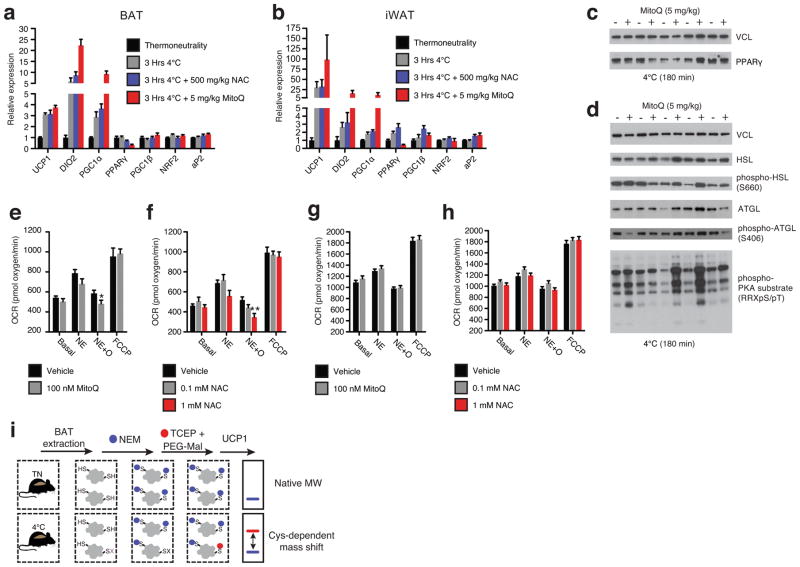Extended Data Figure 3.
Assessing thermogenic gene expression, adrenergic response parameters, and strategy for UCP1 cysteine thiol redox status. a, b, Quantitative polymerase chain reaction (qPCR) analysis of mRNA of proteins involved in thermogenesis in (a) BAT and (b) iWAT (n = 5). c, d, Immunoblot analysis of (c) PPARγ and (d) lipolytic phosphorylation cascade in BAT following cold exposure ± MitoQ. e, f, Raw OCR of primary brown adipocytes under basal conditions and following NE stimulation + oligomycin to determine leak respiration ± (e) MitoQ (n = 10) or (f) NAC (vehicle and 1 mM NAC n = 8; 0.1 mM NAC n = 7). g,h, OCR of primary brown adipocytes lacking UCP1 under basal conditions and following NE stimulation + oligomycin ± (g) MitoQ (n = 10) and (h) NAC (n = 10). i, Cys-redox mass shift strategy. Following in vivo interventions mouse BAT is excised and unmodified protein thiols are labeled with N-ethylmaleimide (NEM), following which reversibly oxidized thiols are chemically reduced and labeled with polyethyleneglycol maleimide (PEG-Mal) allowing for determination of cysteine oxidation status on UCP1. Data are mean ± s.e.m. of at least five replicates. *P < 0.05, **P < 0.01, (two-tailed Student’s t-test for pairwise comparisons, one-way ANOVA for multiple comparisons, two-way ANOVA for multiple comparisons involving two independent variables).

